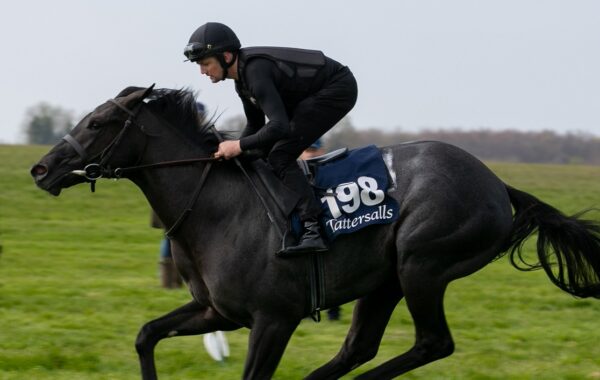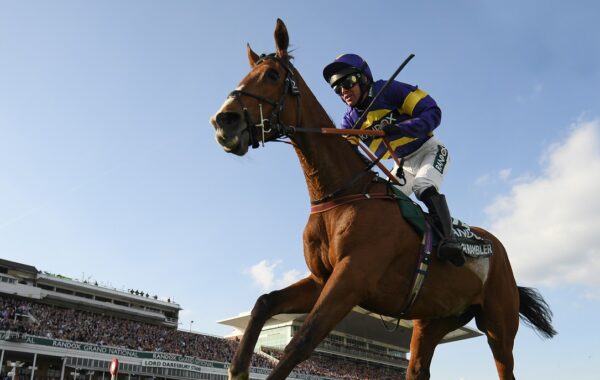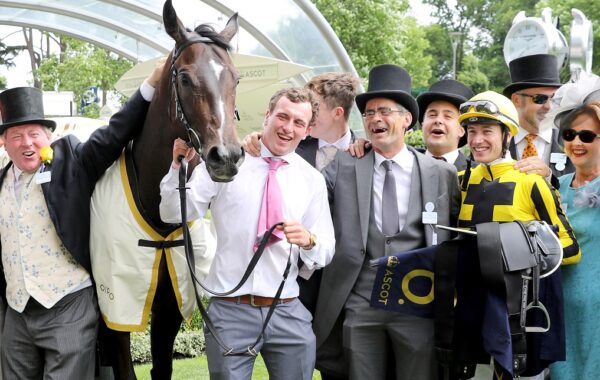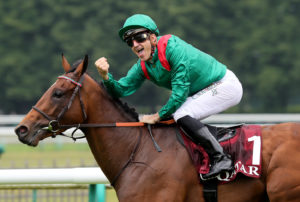Arthur Hancock did everything he could to stand his Kentucky Derby winner Sunday Silence. A multiple Grade 1 winner in possession of an appealing mental and physical soundness, there were grounds for thinking that the horse would be an asset to Kentucky when the time came for him to retire to stud.
Hancock set the wheels in motion to stand the horse alongside his sire Halo at his Stone Farm for the 1991 season. But there were no takers. The tall, lanky Sunday Silence had been a cheap $17,000 buyback as a yearling and had an underwhelming female line. By contrast, his great racetrack rival, Easy Goer, was a big, flashy, well-connected son of Alydar; as Hancock’s brother Seth prepared to send 40 contracts out to breeders for Easy Goer at Claiborne Farm, interest in Sunday Silence spluttered.
“Basically, the Japanese outsmarted everybody.”
In an interview with Trainer magazine last year, Hancock recalled: “At the same time, I got a call from a representative of Teruya Yoshida saying that Shadai would be interested in buying the whole horse. They were offering $250,000 per share. It was a no-brainer to sell because at the end of the day, I had two contracts and three shares sold.
“Basically, the Japanese outsmarted everybody.”
Those words have rung true ever since. Sunday Silence was an incredible success in his new home from the outset, with his first crop containing the country’s champion two-year-old Fuji Kiseki, Oaks heroine Dance Partner and the 2,000 Guineas one-two Genuine and Tayasu Tsuyoshi, who also filled the first two places in reverse order in the Japanese Derby. In all, he sired 171 stakes winners led by six Japanese Derby scorers and a host of successful stallion sons, among them Deep Impact, Heart’s Cry and Daiwa Major.
So dominant was Sunday Silence that today it is estimated that at least 70% of broodmares based in Japan have him somewhere in their female lines.
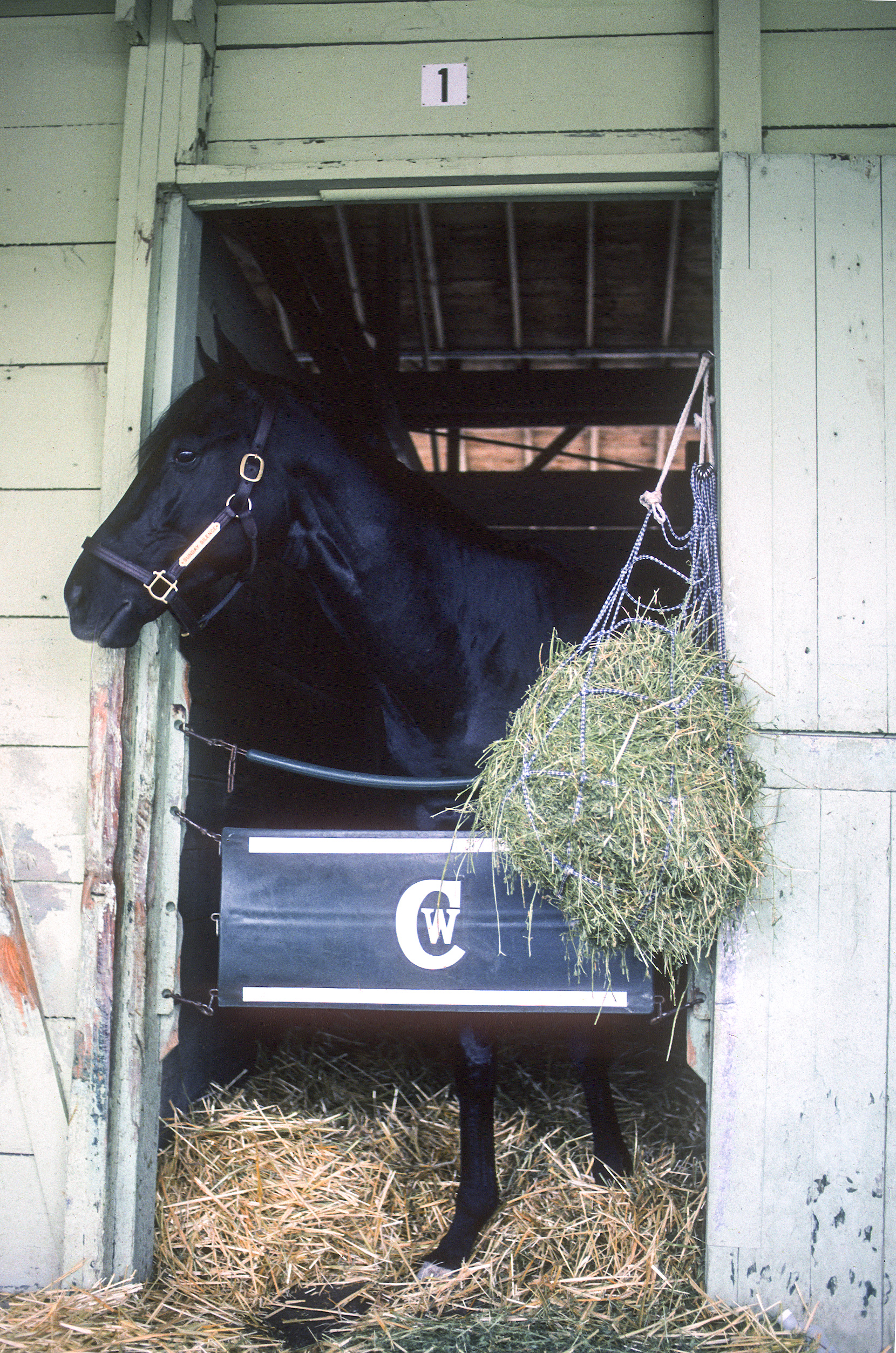
Sunday Silence pictured the morning after his Breeders’ Cup Classic win. He would go on to change the face of Japanese breeding. Photo – George Selwyn
His success, which built on the foundations laid by Japan’s previously dominant stallion Northern Taste, coincided at a time of great determination by Japanese breeders to improve their stock. That in particular rang true in the case of the Yoshida family, who for many years have done what they can to purchase the best fillies and mares from around the world.
All the while, training methods have continued to be honed and the drive to compete internationally bolstered. The Japanese public enjoy racing immensely, their enthusiasm undoubtedly encouraged by a desire by owners to race horses on well beyond three years of age; never will you see a horse retired to stud after his juvenile season. Similarly, middle-distance and staying races are revered within the racing programme, meaning that a number of the more popular stallions are true middle-distance performers. Deep Impact, for instance, won five Group 1 races over a mile and a half or beyond including the Tenno Sho Spring over two miles.
Japanese participants have been a frequent presence on the international stage for several decades. It was almost 24 years ago that trainer Hideyuki Mori sent Seeking The Pearl out to win the Prix Maurice de Gheest at Deauville.
Celebrated as the first Japanese-trained winner of a European Group 1, the feat was repeated only a week later at the same track by the Kazoo Fujisawa-trained Taiki Shuttle in the Prix Jacques les Marois.
Today, it is very much a case of ignore Japanese raiders at your peril, something we have been reminded of on a particularly regular basis over the past 12 months. There was the Breeders’ Cup meeting at Del Mar in California last November where trainer Yoshito Yahagi saddled Marche Lorraine to spring a 50-1 upset in the Distaff and Loves Only You to win the Filly & Mare Turf ahead of a successful swansong in the Hong Kong Cup at Sha Tin in Hong Kong.
As successful as that raid was, however, it paled in comparison to events at the Saudi Cup meeting in Riyadh in February, when Japanese-trained horses, namely Authority, Lauda Lion, Stay Foolish and Dancing Prince, swept four of the day’s Group races.
And yet Japanese horses were even more dominant on Dubai World Cup at Meydan the next month. Their success at that meeting is nothing new – think Victoire Pisa, Almond Eye, Stay Gold and Just A Way among others – but even so, the 2022 meeting took matters to a new level with Bathrat Leon capturing the Godolphin Mile, Stay Foolish following up his Saudi success by landing the Dubai Gold Cup, Crown Pride scoring in the UAE Derby, Panthalassa dead-heating for victory in the Dubai Turf, and Shahryar winning the Dubai Sheema Classic.
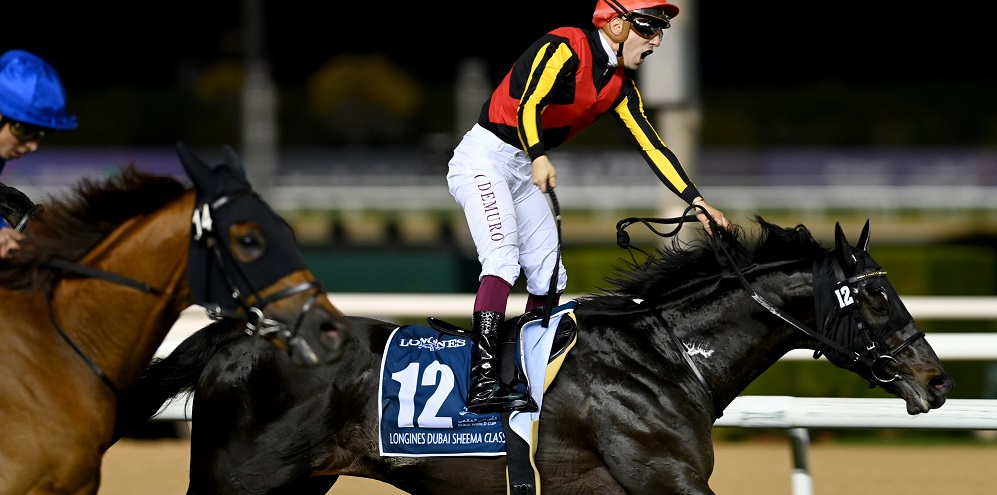
Shahryar: son of Deep Impact captured the Dubai Sheema Classic. Photo – Bill Selwyn
The quintet provided a fine snapshot into the Japanese industry. Firstly, four possess Sunday Silence in their pedigree, namely grandsons Shahryar (by Deep Impact) and Stay Foolish (by Stay Gold) and great-grandsons Bathrat Leon (by the successful Deep Impact stallion Kizuna) and Crown Pride (by the Special Week horse Reach The Crown). King Kamehameha, who stood at Shadai during the era of Deep Impact, also featured heavily, in his case as the paternal grandsire of Panthalassa (by the popular Lord Kanaloa) and damsire of Stay Foolish and Crown Pride.
Shahryar is particularly well-connected as a Deep Impact son of the 2010 Breeders’ Cup Filly & Mare Sprint winner Dubai Majesty. She cost Northern Farm’s Katsumi Yoshida $1.1 million at the Fasig-Tipton November Sale in Kentucky yet had she been by a more successful sire than Essence Of Dubai, a Florida-based son of Pulpit, it’s most likely that Yoshida would have faced far stronger competition.
Japanese buyers, in particular the Yoshida family, have excelled with taking a chance on this type of mare for many years – think Donna Blini, the best sired by Bertolini who threw Japanese Horse of the Year Gentildonna. Aligned with the inevitable acquisitions of regally-bred fillies and the end result is a stock base bursting with quality.
Improvement of training methods in Japan over the years
“From a pedigree point of view, it certainly seems that the import of world-class stallions like Sunday Silence and also of high-quality mares from around the world, which has happened as a result of the Japanese breeding industry’s collective effort to breed superior racehorses, has borne fruit,” says Kaoru Matsuda of the Japan Bloodhorse Breeders’ Association.
“Overall, the recent international success of Japanese horses is most likely a result of the experience gained from many years of Japanese horsemen venturing overseas, including the process of transporting the horses and selecting the right race for each horse. And the improvement of training methods in Japan over the years, with better increased coordination between the Japan Racing Association (JRA) training centres and private training farms, is also probably a significant factor as well.”
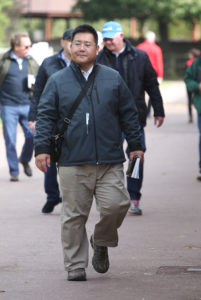
Keisuke Onishi: purchased Classic producer Little Book at Tattersalls. Photo – Tattersalls
Keisuke Onishi of the JS Company, a regular buyer in Europe and the US who bought Little Book, the dam of 2019 Japanese Derby winner Roger Barows, at Tattersalls, is in agreement.
“Many people believe that Sunday Silence triggered big changes to horseracing in Japan and I agree with that,” he says. “Also, I agree that breeders, breakers and trainers have worked hard and got the method and technology right to make a good, tough and strong horse.
“Many horsemen have sent good runners to big races all over the world, especially Europe, US, Australia, Middle East and Hong Kong. I think many trying experiences made Japanese horsemen grow up – they have learned how to make the horses perform better, both physically and mentally, despite the environmental changes and long flights they encounter.”
A regard for middle-distance horses appears to have paid off. Would a horse such as Harbinger, the wide-margin King George winner of 2010, have succeeded at stud in Europe? In light of our desire for precocious speed, it’s an interesting question. As it is, the son of Dansili has thrived under the Shadai banner in Japan, notably as the sire of Group 1 winners such as Normcore and Deirdre, who landed the 2019 Nassau Stakes at Goodwood for Japan.
Japanese people enjoy betting and horseracing is viewed in a positive light compared to other betting outlets.
“We have a very good business model as all the income stays in the industry,” says Kanichi Kusano of the JRA. “95% of betting turnover goes back into the industry, so as long as we get the turnover, the industry stays healthy.
“Japanese people enjoy betting and horseracing is viewed in a positive light compared to other betting outlets. So it’s a popular sport. And the horse’s beauty itself is an important element in that.
“The JRA controls everything. There is a diverse programme of racing [split between turf and dirt] and that helps the breeding side. Also the owners have been working very hard to improve the bloodlines. You could say it’s been a long-term project – a strong combination of a good business model and a long- term strategy.”
“It’s taken them probably 50 years to get to this point,” says agent John Tyrrell of the BBA Ireland. “Go racing there and see the depth of the crowds. On a big day like the Derby, they will be queuing to get in from early morning and you’ll have 120,000 people. Even on other days, the enthusiasm for the crowd is very evident.”
He adds: “The focus is on middle-distance horses, those ten-furlong to 12-furlong horses, because over there, if you really want to get into the sport, those Classic types are what’s needed.
“The Shadai Group are in a position where they can tinker with different bloodlines. What probably helps is that breeders have access to a broader spectrum of bloodlines than what is available over here. There is a dominance through Sunday Silence but other bloodlines are successful there.
“Lord Kanaloa has been a big success for them, he was all speed on the track but has been versatile at stud. Drefong [the current leading second-crop sire] is the same – he was a very fast sprinter in the US but he’s just sired the Japanese 2,000 Guineas winner [Geoglyph].
“And of course, they have been buying very good mares on a regular basis for many years now. In the past they would always look to buy a black-type mare or filly, but more recently there appears to have been a focus on buying into strong families as well.”
Once unwanted by breeders, the Sunday Silence sire-line is now in demand across the globe.
By the late 1990s, Shadai had entered into a partnership with John Messara of Arrowfield Stud with the principal idea of breeding mares to Sunday Silence on southern hemisphere time. Out of that limited pool, Sunday Silence threw the 2003 AJC Oaks heroine Sunday Joy and Listed winner Keep The Faith, subsequently a Group 1 sire.
Sheikh Mohammed sent his Woodman mare Wood Vine to Sunday Silence in 1998 and bred Silent Honor, who was trained by David Loder to win the 2001 Cherry Hinton Stakes.
The Wertheimer brothers also had a successful experience as breeder of the Grade 2-winning miler Silent Name. Now a Group 1-producing sire at Adena Springs North in Canada, 20-year-old Silent Name boasts the distinction of being the only son of Sunday Silence currently in service outside of Japan.
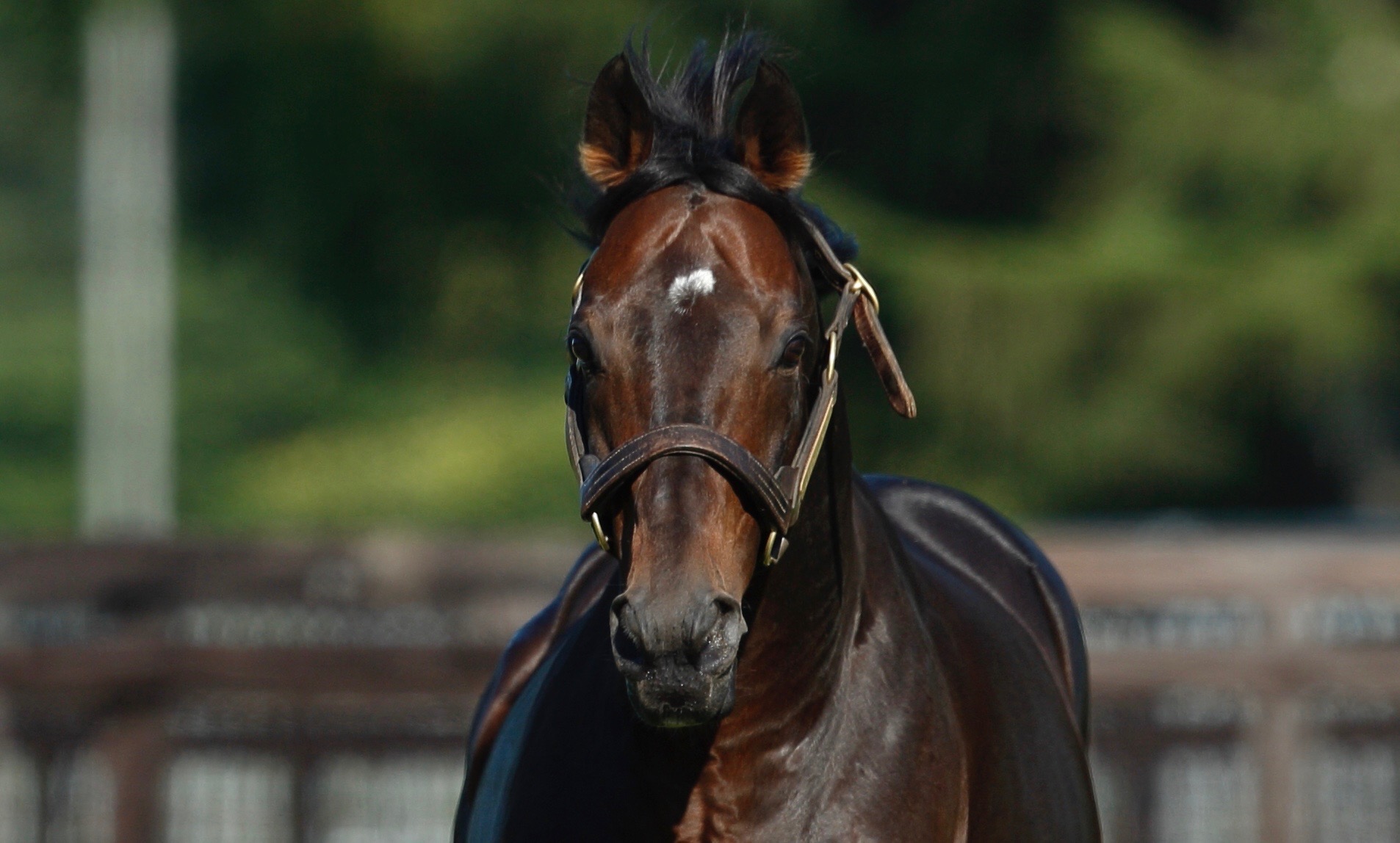
Deep Impact: filled the void left by Sunday Silence
Similarly, the Niarchos family were swift to patronise Sunday Silence and out of that bred Sun Is Up, the dam of their top miler Karakontie. A sire of increasing international note at Gainesway Farm in Kentucky, his early crops include current Grade 1 performer Princess Grace, a filly inbred to Sunday Silence.
Patrick Barbe’s plan to import several sons to stand in Europe during the 2000s also reaped dividends in the case of Divine Light, whose French sojourn yielded the 2008 1,000 Guineas heroine Natagora. Meanwhile, Group 1 winner Hat Trick left behind the top French two-year- old Dabirsim from his time at Walmac Farm in Kentucky.
The void was swiftly filled by his best son Deep Impact
When Sunday Silence died in 2002, it was envisaged that he would leave a massive void in the Japanese industry.
And while that was true to some extent, it was swiftly filled by his best son Deep Impact. European and North American breeders were more attuned to the capabilities of the Sunday Silence line when he retired to stud and therefore Deep Impact has been more of a regular presence in this part of the world than his sire ever was, his 56 Group 1 winners including Poule d’Essai des Pouliches heroine Beauty Parlour, Prix du Jockey Club winner Study Of Man and the high-class Coolmore trio of 2,000 Guineas scorer Saxon Warrior, Prix de Diane victress Fancy Blue and the Group 1-placed September.
It will be fascinating to see how Saxon Warrior and Study Of Man fare at stud. Coolmore’s Saxon Warrior is already off the mark with his first two-year-olds while the first crop of the Niarchos family’s Study Of Man, who has been well supported by his connections at Lanwades Stud in Newmarket, are yearlings.
Another young member of the Sunday Silence line, Grade 1 winner Yoshida, has been popular in Kentucky at WinStar Farm. A Graded stakes winner on turf and dirt and supported by a powerful syndicate, he is the only son of Heart’s Cry at stud outside Japan.
Apart from being a tough line renowned for its physical and mental soundness, it also offers access to the Hail To Reason line via Halo, which has to be regarded as a welcome avenue given the saturation of Sadler’s Wells and Danzig blood currently at play in Europe.
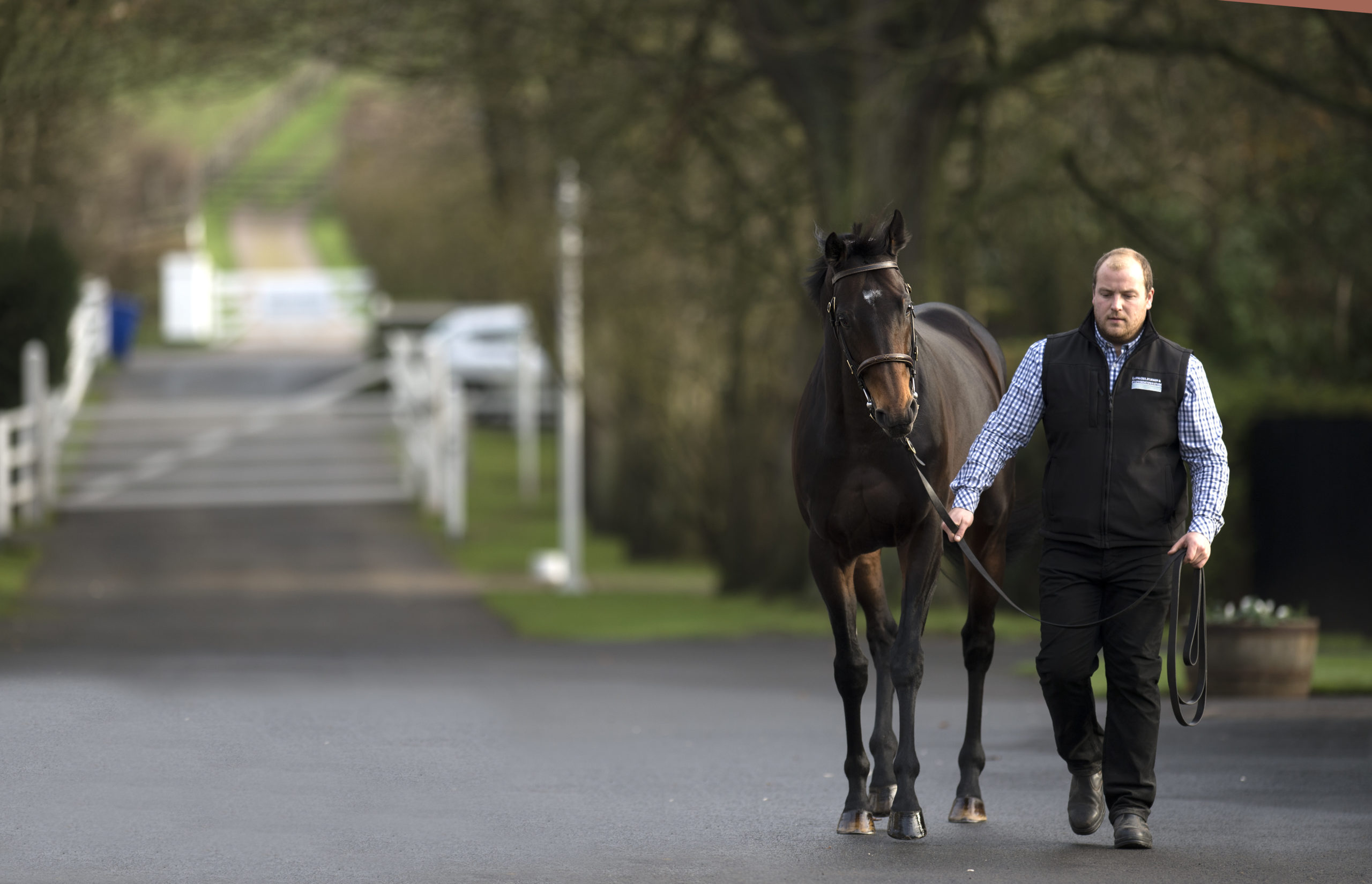
Study Of Man: Classic-winning son of Deep Impact stands at Lanwades Stud. Photo – George Selwyn
On the other hand, Japanese breeding now finds itself in a place where the dominance of Sunday Silence is overwhelming. Close to 5,000 foals worldwide are inbred to the horse, among them only 40 stakes winners, although the list does include the top performers Efforia and Daring Tact. Japanese stallion masters don’t appear averse to importing new sire lines – Group 1 winners Poetic Flare and Benbatl are recent additions to Shadai and Big Red Farm – and in some instances, success hinges on how effectively a stallion clicks with Sunday Silence-line mares; Harbinger is a case in point, having sired 17 stakes winners out of such mares.
Onishi has long imported stallions from Europe and Kentucky, many of them to stand at Arrow Stud. Recent acquisitions include champion California Chrome out of Kentucky.
“California Chrome’s first crop here are yearlings and he has covered over 120 mares this year,” he says of the $14.8 million earner. “He has been bred to many Sunday Silence-line mares and I think that will be a big help for him to enjoy success in Japan.”
The Japanese thoroughbred is more powerful than it’s ever been. It is a testament to not only their collection of bloodlines and evolving training methods but ability to appreciate the middle- distance horse and stayer, something that our breeding industry is losing sight of.
“I’ve been working with Japanese buyers for over 20 years now,” says Tyrrell. “There have been a lot of changes during that time. For starters, the training has improved immensely – they have fabulous facilities up in Hokkaido.
“It really is the kind of racing product that we dream about having over here – they have the stallions, they have the mares, they have the facilities and then at the end of it they are also racing for excellent prize-money. They’ve got everything in place and now they have the confidence to go and travel these horses. And with that success comes more confidence to do it again.
“Should we be that surprised that they walked away with so many races in Saudi Arabia? And then did it again in Dubai? No, absolutely not.”
European Appeal
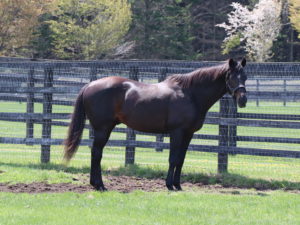
Bago: 21yo Arc hero still going strong at the JBBA. Photo – JBBA
For decades Japanese stallion masters have looked to Europe to secure new recruits. Never was this more evident than the 1990s when a slew of Derby winners – Dr Devious, Commander In Chief, Erhaab, Oath and High-Rise – retired straight to Japan.
While it is a strategy that has yielded mixed rewards, it did mean that Japanese breeders gained access to a wide range of bloodlines to improve their stock.
At the forefront of the movement is the Japan Bloodhorse Breeders’ Association (JBBA). Established in 1955, the JBBA has imported numerous stallions from around the world with the aim of raising the standard of Japanese breeding. At the same time it works to offer a roster where the emphasis is on variety; one of its main aims is to prevent the over-concentration of certain bloodlines within the industry.
The JBBA operates three stallion stations on the island of Hokkaido, which are home to several well-known European names, notably Frankel’s Group 1-winning brother Noble Mission, Arc hero Bago, top miler Declaration Of War, 2,000 Guineas winner Makfi, Irish Derby scorer Cape Blanco and Champion Stakes hero David Junior.
Johannesburg, a brilliant two-year- old who has left a major mark on the breed as the sire of Scat Daddy, also resides with the JBBA in retirement.
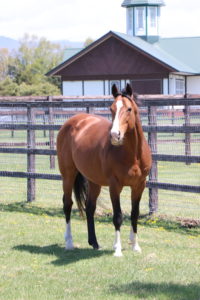
Noble Mission: Frankel’s Group 1-winning brother has been popular. Photo – JBBA
“It is hard to pinpoint one thing in particular the JBBA looks for,” says Kaoru Matsuda, who heads its stallion operation and international affairs department. “That said, we do tend to import new bloodlines from Europe or America to offset any unhealthy concentration of particular bloodlines, with the goal of helping to raise the overall quality of Japanese horses.
“Japanese racing is structured with the Japanese Derby as its top race, but there is demand for various types of horses including sprinters, middle- distance runners, turf and dirt horses. As such, variety remains quite important in Japanese racing.”
While the JBBA secures a number of colts for stallion duty straight off the track, it also makes a point of acquiring established stallions. Variety in stallion lines is key, as borne out by the current roster which ranges from sons of Tapit (Belmont Stakes winner Creator) and Into Mischief (Grade 1 winner Mischievous Alex) to those by Dubawi (Makfi) and Galileo (Noble Mission and Cape Blanco). Interestingly, the roster contains not one descendant of Sunday Silence.
Makfi joined the JBBA in 2017 following stints at Tweenhills Farm and Haras de Bonneval while Declaration Of War joined in 2019 having previously stood for Coolmore. Noble Mission arrived for the 2021 season as the sire of Grade 1 winner Code Of Honor from his time at Lane’s End Farm in Kentucky.
“Makfi has been quite successful for us with a JRA Graded stakes winner [All At Once] from his first crop,” says Matsuda. “From his second crop, he has sired a good number of dirt winners, so we are hopeful that he can be successful on turf and dirt. He has been very popular with breeders.
“Declaration Of War’s progeny in Japan too are being well-received; in fact, a filly was the highest priced lot at this year’s JRA Breeze-Up Sale.
“Noble Mission, of course, is very attractive in terms of his pedigree, and we are pleased to say that breeders are very happy with the quality of his first foals this year.”
As for Arc hero Bago, he is enjoying a purple patch late in life thanks to the exploits of champion Chrono Genesis and Group 1 performer Stella Veloce. The son of Nashwan has stood at the JBBA since his retirement from racing and is the sire of 11 stakes winners overall.
“Bago is 21 this year and with his successful record, he is still quite popular,” says Matsuda. “We expect him to give us a few more star runners, so we are hoping we can keep him healthy and active for a while longer.”
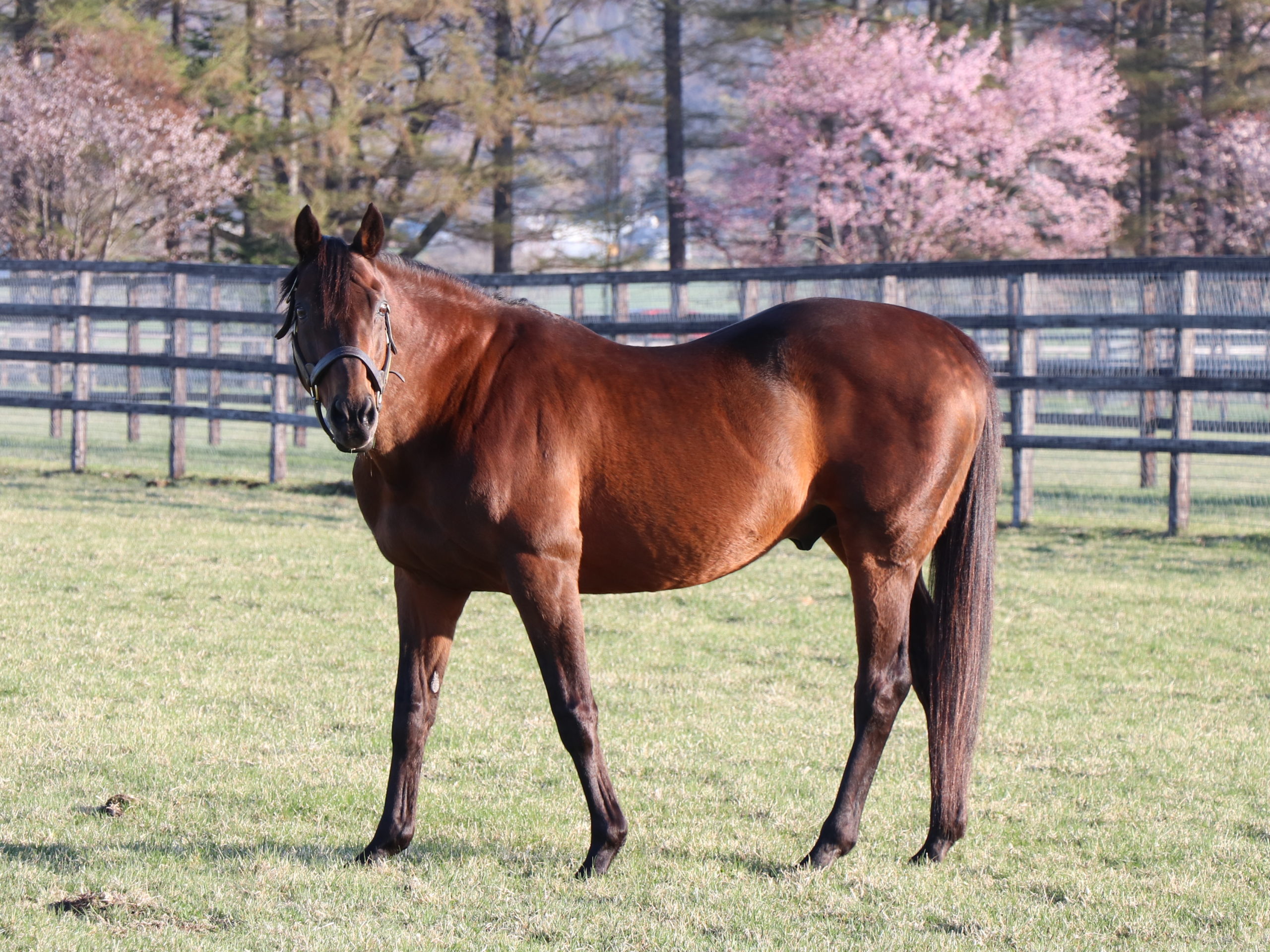
Johannesburg: a brilliant 2yo and the sire of Scat Daddy, he is pictured last month in retirement at the JBBA. Photo – JBBA



